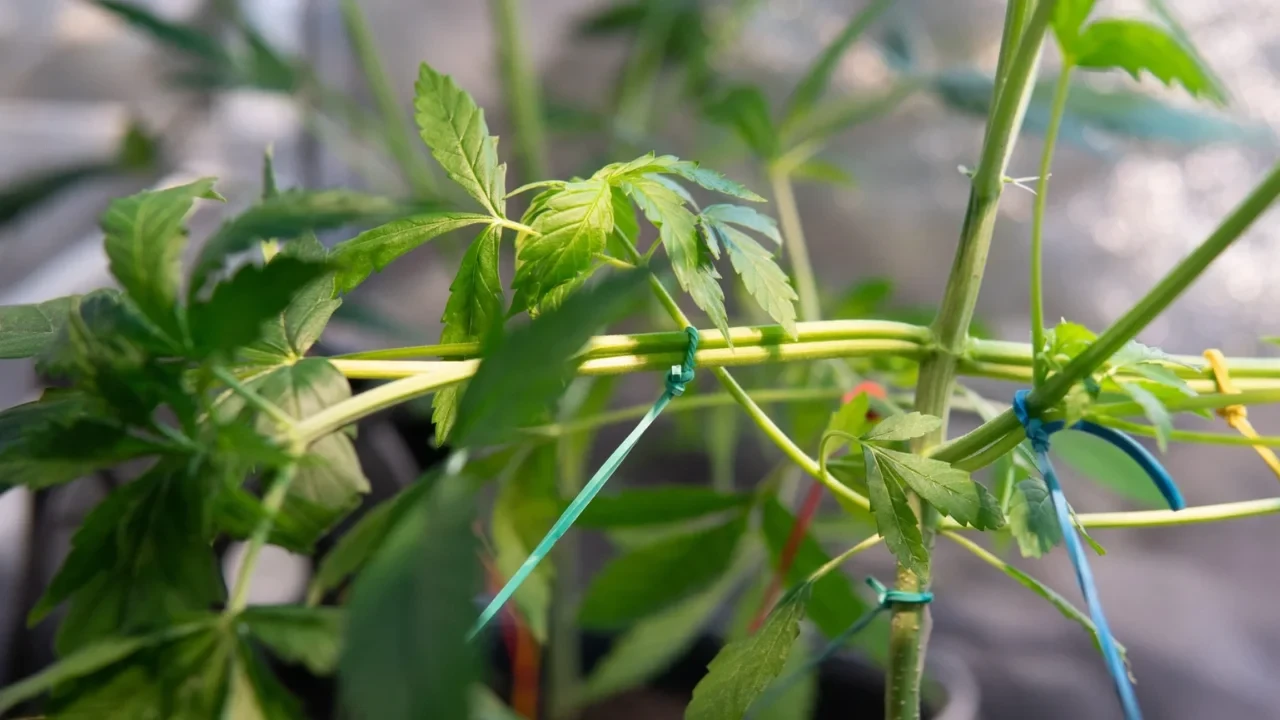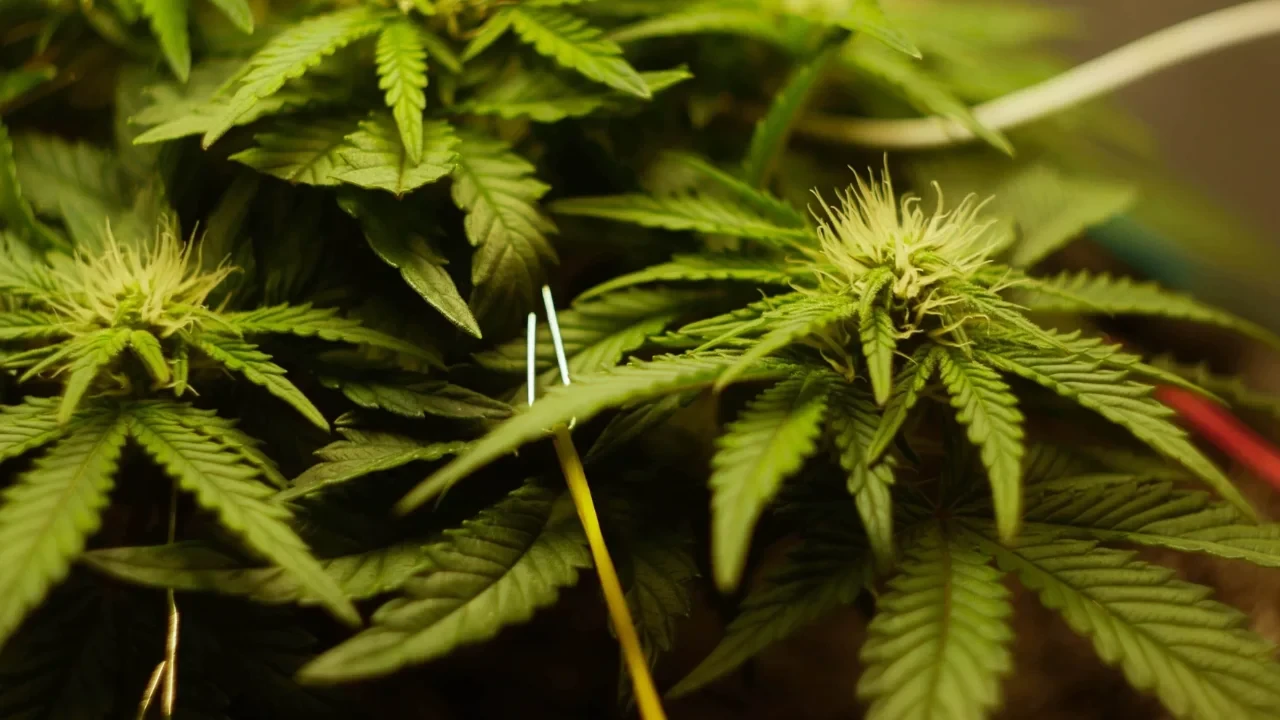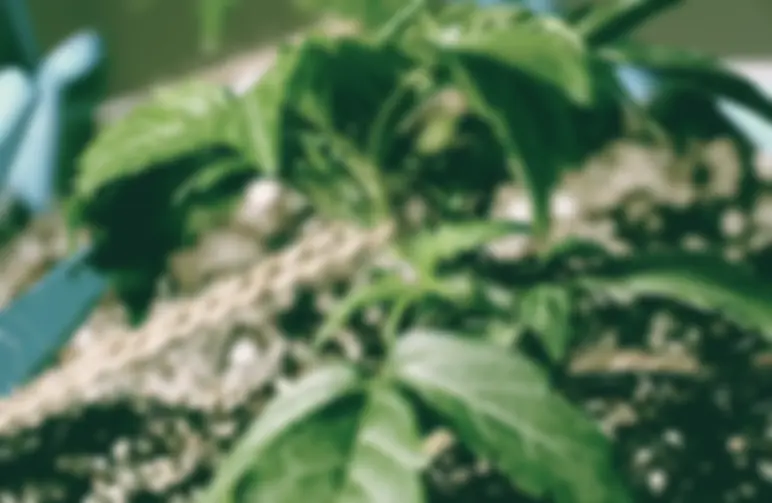After you have planted your weed seeds and the cannabis plants get older, their leaves become increasingly thick and bushy and can resemble a Christmas tree with a pyramid shape, which is wider at the bottom and narrow at the top.
Their inner node stacking may be pleasingly tight, but this also prevents much-needed light from reaching the bottom of the canopy. The solution is low stress training, and we'll show you how to do it in this step-by-step guide.
What is Low Stress training (LST)?
Low stress training (LST) is a plant training method used by growers to increase their yields and manipulate the plants' overall size and shape. It derives from the ancient practice of espalier, which is cultivating or pruning a plant to grow up and across a trellis or other type of flat 2D structure.
Applying low stress training methods is a bit like cultivating bonsai trees, as you are manipulating the shape of the plant to your will. You are essentially bending stems to adjust the entire plant's growth.
Fig trees were trained in this way to grow along walls in Ancient Egypt, and similar methods have been used in various types of horticulture for centuries. In cannabis circles, however, low stress training is mainly used for growing weed indoors, but also outdoor cannabis growers adapt methods of low-stress training.
Advantages of Low Stress Training
Cannabis is a robust and vigorous plant that, left to its own devices, will quickly grow to a tall and highly visible height. To allow more light to penetrate to the new growing bud sites, growers apply LST, to promote a more horizontal growth.
Another reason why growers of weed are keen to embrace low stress training techniques is the fact that it is an effective way of keeping the (outdoor) cannabis plants to a manageable and discreet height where they are less likely to be noticed by curious neighbors or passers-by.
When to start Low Stress Training?
You can start to perform low stress training once the marijuana plant is big enough to allow you to do so, and it is most effective when the plant is young. So you can start with a small seedling as long as it has several leaves.
LST causes so little stress that it can, in principle, be used throughout the culture. You get the most out of low stress training by starting if your cannabis plant is just a seedling.
LST more or less stops when a cannabis plant no longer stretches, about halfway through flowering. After this, you can still bend branches in different directions for light penetration, but this will not result in new side branches.
Having said that, LST works great throughout the cycle but will have a lot less effect in the flowering stage than at the beginning. When a cannabis plant switches to the flowering stage, it can double in height within just the first few weeks. This is known as the flowering stretch.
However, all that new growth needs to be controlled so you can maintain the amazing canopy you've been working on throughout the plant's life!

How to Low Stress Train Cannabis (step-by-step)
Step 1: Gather materials
The goal of low stress training is to manipulate your cannabis plant as much as possible without causing a stress response. You can use anything that is not too "sharp." It's best to not use thin iron wire, as it can easily cut through your LST cannabis plants.
Most people, therefore, use special iron wire with a thick rubber layer around it. But you can get creative. Other popular alternatives are thick wool, clothes hangers, and pipe cleaners.
This is what you need on your shopping list:
- Seeds for your marijuana plants
- Twisty ties or plastic clips
- Sharp scissors
- Duct tape - this is invaluable in securing ties or canes or repairing accidentally snapped branches
- There is a range of options to provide support for the bend. You could use bamboo canes or drill small holes near the rim of the pots.
Step 2: Select stem
Start by carefully feeling how flexible the (main) stem or branch is that you want to bend, so you know if you can work with it “safely”. If you suspect it might snap, it's not suitable.
Then, visualize the type of shape you would like your plant - it's best to stick to a simple cannabis bush for beginners. At this point, you can pinch out the top leaves; it's up to you.
Step 3: Tie the highest branch
Tie or clamp the highest branch so that the former top is suddenly at a lower level than the rest of the plant. Look carefully to see if the stem bends smoothly, and do not try to bend it too far.
It is essential that you start any low stress training as soon as possible. It's best to start when your plant is very young, though, with LST, it's always better late than never.
The main idea is to keep all the stems about the same distance from the light. So, you want to continually bend the tallest stems down to the same level as the others and use a twisty tie to secure it gently but firmly in position.
Even if you never top the plant, you can simply bend it in the direction you want it to go.
Step 4: Organize the canopy
Continue by organizing your canopy by bending everything to the right places, especially the small new side branches that are now going to grow vertically. You could also tie the next highest branches down to enhance the LST effect.
Step 5: Watch and wait
24 hours after bending, the branch will start to grow up again, but it will start as low as the rest of the branches. As the secondary branches start to receive more light and grow up, you may need to LST them, too.
Step 6: Repeat tieing process
Wait until your canopy is properly filled and uniform again and then repeat the tying process.
Step 7: Flowering
A sea of equally large peaks will emerge during flowering. Once your cannabis plants start to flower, they will grow incredibly quickly. At this stage, pruning the lower branches that will never have any chance of reaching or getting any light is a good idea.
This will encourage the weed plant to be more productive up top where it matters rather than wasting energy on stuff that will not actually affect the final yield of your plant. It also will allow better ventilation for your canopy.
Take off doing the bottom two or three, leaving the leaves on. The leaves get pruned a little later as the flowers are bursting.

FAQ about Low Stress Training Weed Plants
As every "LST grow" is different, we get an enormous range of questions about this subject. The questions below are by far the most frequently asked, so we thought it would be a good idea to answer them in advance!
How should I attach my LST wires?
Whatever your LST does exactly, you always have to attach the other side to something, usually the plant container. Thicker types of wire often stick well into the ground like a tent herring, but you can also drill holes in the side of your pot or tie a band around your pot.
If you are an experienced cannabis grower, you may wish to combine low stress training with the SCROG method of cultivation.
This involves maximizing the amount of light exposure by training young cannabis plants to grow with the help of SCROG nets -(you can also use chicken wire) and by focusing high-intensity discharge lamps on the crops.
What should I do if I snap a branch accidentally?
Don't panic! You can usually successfully repair a snapped branch by quickly placing a patch of duct tape around the damaged area. A quick graft in this manner won't cause any lasting damage to the health of your cannabis plant, and it should heal quickly.
Tip: try adding a bit of aloe vera to the interior plant to improve the chances of healing even further.
What have we learned?
Low stress training is one of the plant training methods many growers start with once they grasp the basics of growing cannabis. By bending branches and securing them in place, you can manipulate the plant's growth to ensure that the entire plant absorbs more direct light, which can significantly increase yields over time.
While mostly applied in indoor growing setups, outdoor plants can also benefit from low stress training. It's important to start early and stay hands-on to ensure your cannabis growth is as smooth as possible.





